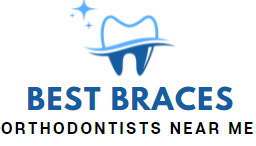ST. LOUIS, October 3, 2022 — October is National Orthodontic Health Month. The observance is in part a celebration of healthy, beautiful smiles and the benefits of orthodontic treatment – but also, an opportunity to focus on the importance of good oral health, especially for orthodontic patients and those who are interested in treatment. In conjunction with this observance, the American Association of Orthodontists (AAO) and individual AAO members will provide updates and reminders for adults who may be considering treatment. Orthodontists spend two to three years in residency training following graduation from dental school to become specialists in orthodontics. Their training makes them experts in straightening teeth, aligning bites and creating beautiful, healthy smiles. Questions that adults considering treatment often ask include: Wouldn’t it be a simple thing to just straighten a few of my front teeth? Teeth are moved when any orthodontic appliance (like a clear aligner, or braces) puts pressure on the teeth. The pressure causes necrosis (death) of the supporting structure around the tooth, allowing the tooth to move within its alveolus (bone socket); and bone then reforms around the tooth. Moving “just the front teeth” can have significant consequences on oral function and health. Do I have to do in-office visits to have successful orthodontic treatment? In-person examinations and monitoring are crucial to ensure safe and effective orthodontic treatment. Some of the most important parts of orthodontic treatment for ensuring the treatment is safe and effective can only be done in person. For example, X-rays are the only way to see underneath the gums (digital scans and photographs can’t see under the surface of the gums). Without taking an X-ray, it is impossible to see anything the naked eye cannot see, such as the health of the tooth roots (moving teeth with unhealthy roots can cause loosening or loss of teeth) or an unerupted (impacted) tooth. In addition, the only way to effectively evaluate gum health is in-person, such as through periodontal probing (checking the depth of the root pocket with a dental probe). Straightening teeth when the patient has poor periodontal (gum) health can lead to recession (exposure of the tooth roots), root shortening, or tooth loss. Will an orthodontist offer treatment with my preferred method, such as clear aligners? Many orthodontists provide clear aligner treatment after determining that treatment with aligners is suitable for the patient – which is often the case. Forming an accurate diagnosis is the starting point, and that’s something that orthodontists are especially well-trained at doing. After the orthodontist pinpoints the problem, he or she then crafts a customized treatment plan for the patient. If there is any reason why clear aligners are not the optimal choice, or a viable choice to correct orthodontic problems for a patent who prefers aligners, the orthodontist may present treatment plans involving braces. Options that many adult patients like, and that are available from many orthodontists, include clear braces and lingual braces (braces that are fixed behind the teeth). Learn more at the AAO blog post, “Orthodontic Treatment with Clear Aligners.” About the American Association of Orthodontists: The American Association of Orthodontists represents more than 18,500 orthodontist members throughout the United States, Canada, and abroad. Founded in 1900, AAO is the world’s oldest and largest dental specialty organization. AAO is dedicated to ethically advancing the art and science of orthodontics and dentofacial orthopedics worldwide; improving the overall oral healthcare of the public; advocating for the health and safety of the public; educating the public about the benefits of orthodontic treatment provided by an orthodontic specialist. For more information and to find an AAO member orthodontist, visit aaoinfo.org. For more information, contact Mindi Brothers, [email protected] or 314-292-6569. The post Orthodontists Respond to FAQs From Adults Considering Treatment appeared first on American Association of Orthodontists.https://aaoinfo.org/press-room/orthodontists-respond-to-frequently-asked-questions-from-adults-considering-treatment/?utm_source=rss&utm_medium=rss&utm_campaign=orthodontists-respond-to-frequently-asked-questions-from-adults-considering-treatment
Related Posts

Ceramic Braces
- hfjrm
- February 20, 2022
- 0
The first thing you need to know about ceramic braces is that they are made of pure ceramic. The material is strong and durable, and […]

How to Find the Best Deal Possible With Dental Braces
- hfjrm
- March 2, 2022
- 0
Dental braces are one of the most popular dental treatments for adults. This is due to the fact that they can help you to correct […]

Things To Consider Before Getting Orthodontic Treatment
- hfjrm
- September 16, 2022
- 0
Orthodontic treatment is the process of straightening teeth. It is a specialized form of dentistry and involves using braces, wires, or other appliances to move […]
